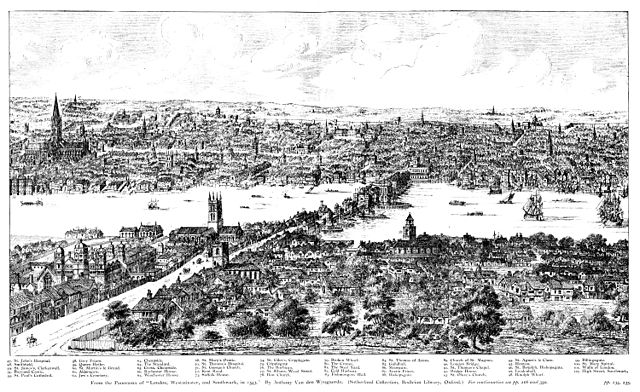Nathaniel Whittock: Difference between revisions - Wikipedia
 Article Images
Article Images
Content deleted Content added
m |
|||
Line 7: {{primarysources|date=May 2011}} '''Nathaniel Whittock''' (b. 26 January 1791) was a Victorian topographical engraver, published [[bird's-eye view]]s, e.g. of [[York]] (1856), [[Oxford]] (1834), [[Melbourne, Australia]] (1854), [[Kingston upon Hull|Hull]] (1855), and London (1845, 1849, 1859).<ref>{{cite web|url=http://www.oxfordartonline.com/subscriber/article/grove/art/T008965|title=Bird’s-eye view|work=Oxford Art Online|quote=Nathaniel Whittock (1791–1860) published lithographic bird’s-eye views of Oxford, London, Hull and York and of Melbourne, Australia|accessdate= 16 May 2011}} (not dates of prints), {{quote|''The decorative painters' and glaziers' guide: containing the most approved methods of imitating oak, mahogany, maple, rose, cedar, coral, and every other kind of fancy wood, Verd Antique, Dove, Sienna, Porphry, white-veined and other marbles, in oil or distemper colour; designs for decorating apartments, in accordance with the various styles of architecture; with directions for stencilling, and process for destroying damp in walls; also a complete body of information on the art of staining and painting on glass; plans for the erection of apparatus for annealing it, and the method for joining figures together by leading, with examples from ancient windows''.<ref>[http://books.google.co.uk/books?hl=en&lr=&id=NCoBAAAAQAAJ&oi=fnd&pg=PR1&dq=Nathaniel+Whittock&ots=C7QKxv1WZ6&sig=STGCE7-z18fma5g-sbQfr2AHVUA#v=onepage&q&f=false ''The decorative painters' and glaziers' guide''], by Nathaniel Whittock, online text</ref> }} As the full title shows, the work was very comprehensive, and the preface "rails against trade secrecy" which the book was intended to dispel.<ref>Joanna Banham, Sally MacDonald, Julia Porter. ''Victorian interior style'', 1995, Studio Editions, ISBN 1858912458, 9781858912455</ref> The work has been described as "influential" and "important" and is often cited by modern scholars of [[interior decoration]].<ref>It is described as "influential" in both: Parissien, Steven. ''Interiors: The Home Since 1700'', p. 140 (quoted) - 141, 2008, Laurence King Publishing, and ''Encyclopedia of interior design: M-Z., Volume 2'', Editors Joanna Banham, Leanda Shrimpton, Fitzroy Dearborn, p. 785, 1997, ISBN 1884964192, 9781884964190. "Important":''Painted wood: history and conservation'', p. 245, 1998, Symposium Proceedings, Getty Conservatiomn Institute, Eds, Valérie Dorge, F. Carey Howlett, ISBN 0892365013, 9780892365012</ref> | |||